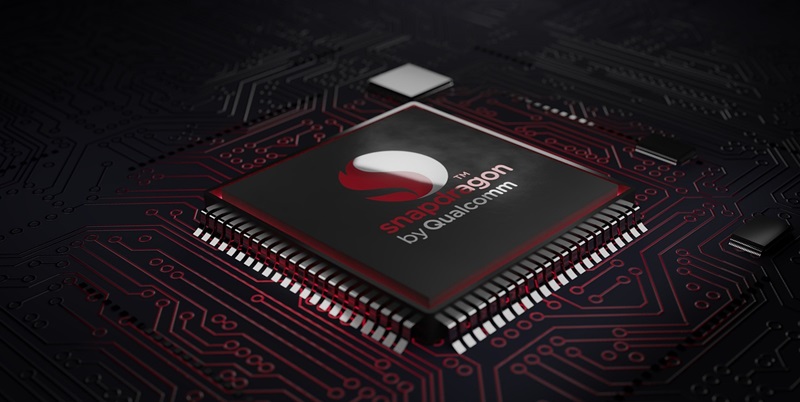Qualcomm’s forthcoming flagship SoC, the Snapdragon 8 Gen 4, is set to make waves with its impressive performance credentials, as showcased on Geekbench. This highly anticipated chipset promises substantial improvements in both CPU and GPU capabilities compared to its predecessor, the Snapdragon 8 Gen 3. Featuring a sophisticated dual-cluster configuration, this new SoC hosts two high-performance cores clocked at 4.09 GHz alongside six efficiency cores running at 2.78 GHz, in alignment with previous leaks indicating a peak clock speed surpassing 4.0 GHz.
Performance Benchmarks
CPU Performance
The Snapdragon 8 Gen 4 has emerged as a significant upgrade over its predecessor when measured against Geekbench benchmarks. With a single-core score of 2884 and a multi-core score of 8840, the new chipset demonstrates a 30% improvement in CPU performance over the Snapdragon 8 Gen 3, which averages scores of 2226 and 6917, respectively. This leap in performance underscores Qualcomm’s strategic architectural enhancements aimed at elevating user experience and harnessing greater processing power. The scores highlight the chipset’s superior performance metrics, ensuring that it caters to the increasing demands of modern smartphone users.
When set against Apple’s A17 Pro, typically found in the iPhone 15 Pro Max, the Snapdragon 8 Gen 4 delivers equivalent performance in single-core processing while far outpacing it in multi-core calculations. The A17 Pro averages scores of 2915 and 7222 in single-core and multi-core tests, respectively. Qualcomm’s new chipset not only matches but also surpasses Apple’s latest in multi-core tasks, which is a monumental achievement. Such a performance edge is quite critical, as it emphasizes Qualcomm’s capability to stand toe-to-toe with Apple’s latest offerings, heralding a new era of competition in the high-performance mobile chipset market.
GPU Performance
The advancements brought forward by the Snapdragon 8 Gen 4 are not limited to its CPU alone; the GPU upgrades are equally noteworthy. Early reports suggest that the SoC may feature an Adreno 830 GPU, complete with a DLSS Frame Generation-like function. This marks a significant leap in graphical performance, enabling more robust and efficient rendering of complex visuals and enhancing the graphical experiences in gaming and other high-demand applications. This leap in GPU capability will be of particular interest to gamers and content creators who rely heavily on graphic-intensive applications.
The anticipated GPU upgrades are not only about increasing sheer power but also about improving efficiency. Qualcomm’s commitment to enhanced power efficiency means that the Snapdragon 8 Gen 4 is designed to deliver high performance without compromising on battery life. This is a welcome development, especially when considered alongside the thermal issues that plagued previous chipsets like the Snapdragon 888. The incorporation of these new technologies indicates Qualcomm’s holistic approach towards providing balanced hardware that supports both high performance and user-friendly features, catering to a broad spectrum of requirements in mobile computing.
Market Implications
Competitive Landscape
Despite the significant advancements, there’s some uncertainty regarding how the Snapdragon 8 Gen 4 will perform against Apple’s forthcoming A18 Pro chipset. The competition between Apple’s and Qualcomm’s flagship processors has always been fierce, and with Apple’s track record of innovation, it remains to be seen whether the Snapdragon 8 Gen 4 will maintain its edge. What is clear, however, is that Qualcomm has set a high bar with its latest offering, pushing the boundaries of what is achievable in the realm of mobile computing.
The leap in both CPU and GPU performances, as showcased through various benchmarks, aligns with Qualcomm’s strategy to aggressively enhance their hardware capabilities. This consistent improvement reflects a broader industry trend where every new generation of chipsets introduces substantial upgrades, keeping pace with the rapid evolution of mobile technology. For consumers, this means access to increasingly powerful devices that are capable of handling a wide range of complex tasks more efficiently than ever before.
Addressing Thermal Issues
Qualcomm’s upcoming flagship system-on-chip (SoC), the Snapdragon 8 Gen 4, is poised to make a significant impact in the tech world, as evidenced by its impressive Geekbench scores. Anticipation runs high for this chipset, which promises notable advancements in both CPU and GPU performance compared to its predecessor, the Snapdragon 8 Gen 3. This new SoC boasts a sophisticated dual-cluster configuration, featuring two high-performance cores clocked at a remarkable 4.09 GHz. Additionally, it includes six efficiency cores operating at 2.78 GHz, which aligns with earlier leaks suggesting an overall peak clock speed exceeding 4.0 GHz. The Snapdragon 8 Gen 4’s architectural improvements are expected to enhance not only raw computing power but also energy efficiency, making it well-suited for a variety of demanding applications, from gaming to artificial intelligence. The introduction of this chipset will likely set new benchmarks in mobile processing, establishing Qualcomm’s dominance in the realm of high-performance mobile platforms and contributing significantly to the next generation of mobile technology.

